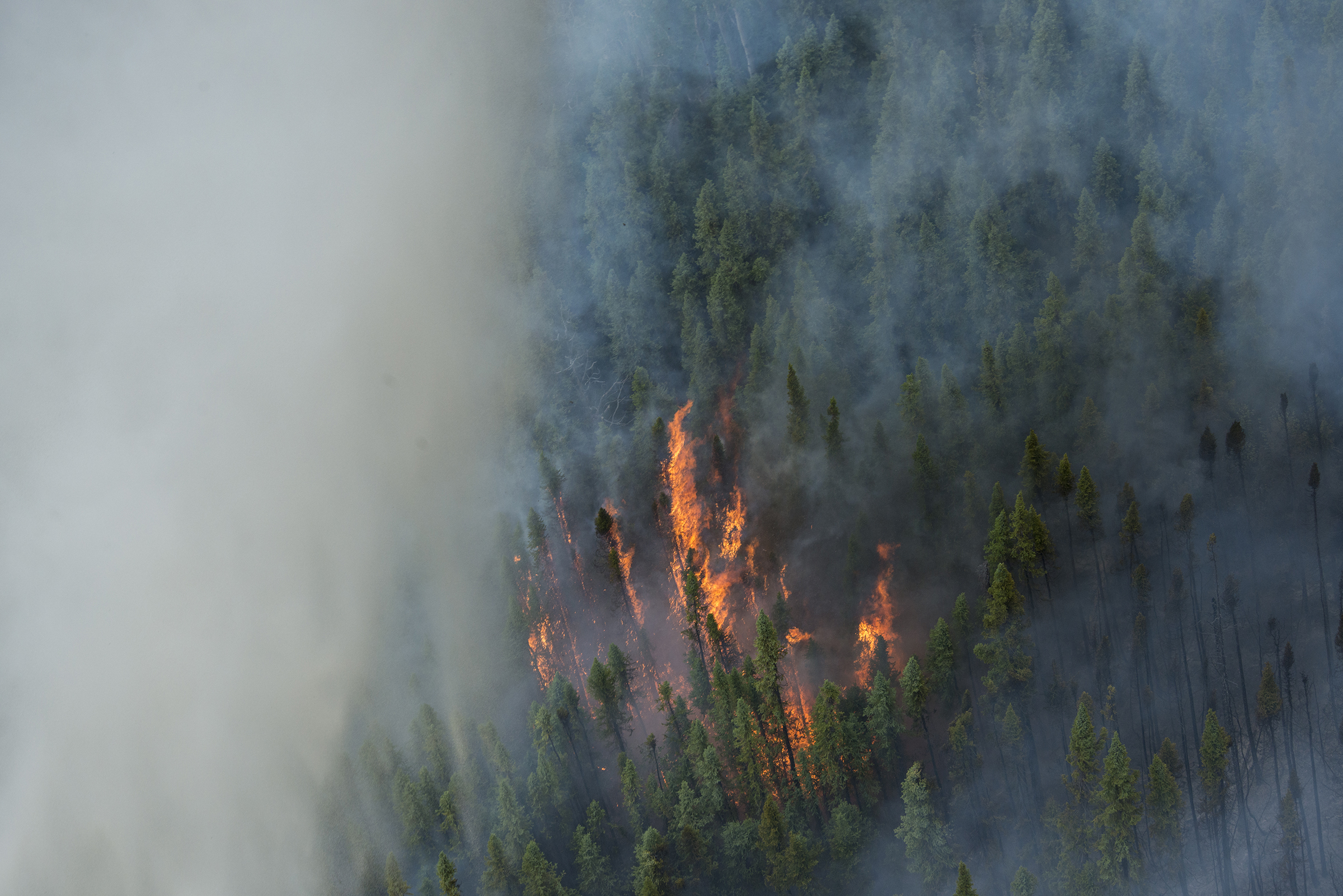Alaska will see a big increase in health-damaging air pollution from wildfires, study says
An especially dangerous component of fire-caused pollution — fine particulates — will at least double, the study found.

Air pollution from wildfires will double for most of Alaska by mid-century, and some populations in both rural and urban areas will be especially hard hit. That’s according to a new study that projects trends in the rapidly warming state.
The study, by scientists from Yale, Harvard and other institutions and published in the journal Environmental Research Letters, focused on the fine-particulate emissions caused by wildfires and models trends expected over the coming few decades and warming increases.
Those fine particulates are classified by environmental regulators as PM 2.5, particulate matter that is 2.5 microns or smaller. These tiny particulates — generally smaller than 1/30 the size of a human hair diameter — can penetrate people’s lungs and even into people’s bloodstreams and are thus especially dangerous to respiratory and cardiovascular health.
The health threats already exist. Fine-particulate pollution from wildfires “likely presents a substantial public health burden in present day for Alaska communities,” the study said, and already there are different impacts to population groups. Most burdened are Athabascan people in Alaska’s Interior region, with average summer exposure to PMS pollution of 13 micrograms per cubic meter, the study said — and days that spike above the 35 micrograms per cubic meter, the federal threshold for daily conditions considered harmful to public health and the environment.
As Alaska’s climate changes, it is poised to suffer much more serious wildfire-smoke health problems in the future, the study said. The authors’ calculations found that in the areas around Fairbanks and in the Denali Borough of Interior Alaska, an increase by mid-century of 150 percent to 350 percent in summer wildfire PM 2.5. That is expected to result in more respiratory hospitalization — an increase of up to 7.5 percent — for Interior Alaska residents 65 and older, according to the calculations.
Wildfire smoke risks go beyond rural areas. Wildfire smoke particulate pollution is also expected to increase substantially in Alaska’s biggest cities, with a potentially disproportionate impact on ethnic minorities, the study said. Urban Alaska, home to about three-quarters of the state’s residents, is ethnically diverse. Fairbanks, for example, has a significant African-American population, and Anchorage has a significant Asian-Pacific Islander population.
The study uses a moderate climate scenario called A1B, which assumes that economic growth will continue and that technology will bring efficiencies.
The choice of a “middle-of-the-road” scenario for projecting out a few decades was deliberate, said study co-author Loretta Mickley of Harvard’s Center for the Environment.
“There is always some uncertainty in predicting climate trends, and by choosing a moderate scenario we can be more confident that we are not overstating what could happen. In any case, the climate trends arising from different greenhouse gas scenarios are fairly similar over the next few decades,” she said by email.
This year’s wildfire season is well underway in Alaska.
There have been thousands of lightning strikes since the last days of May, and some of those strikes sparked fires in Interior forests as well as in tundra on the state’s western and northwestern areas. The farthest-north Alaska fires burning as of June 7 were six lightning-sparked blazes, some of them several hundred acres in size, located more than 100 miles above the Arctic Circle in Noatak National Preserve, according to the Alaska Interagency Coordination Center.
Alaska’s wildfire smoke season has started, too. The Alaska Department of Environmental Conservation issued the season’s first wildfire-related air-quality advisory on June 2, for the Yukon Delta National Wildlife Refuge and nearby communities in the southwestern part of the state.
Big wildfire seasons are now more frequent in Alaska, including in the treeless tundra, and elsewhere in the warming north. And there is another warning sign: fires smoldering through the winter, despite months of snow cover.
The Alaska Division of Forestry in April posted photos of smoke emerging from snowmelt at the site of one of last year’s fires, the Deshka Landing fire in the Matanuska-Susitna Borough north of Anchorage. “The public should expect to see smoke from some, if not all of the larger incidents from the 2019 fire season during the summer of 2020,” the division said at the time
Similar overwintering fires have been reported in Siberia. There, a record-hot spring has fueled an early start to the wildfire season.